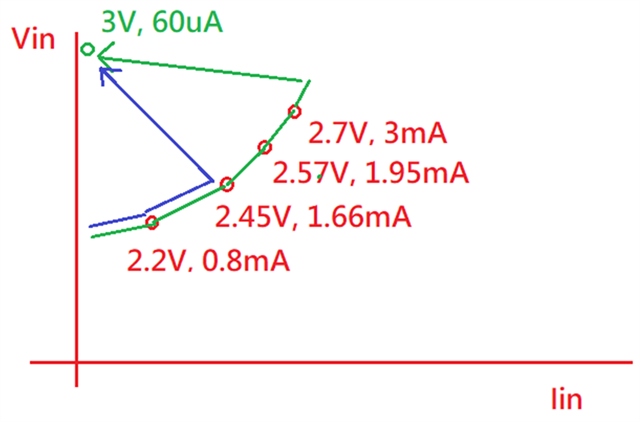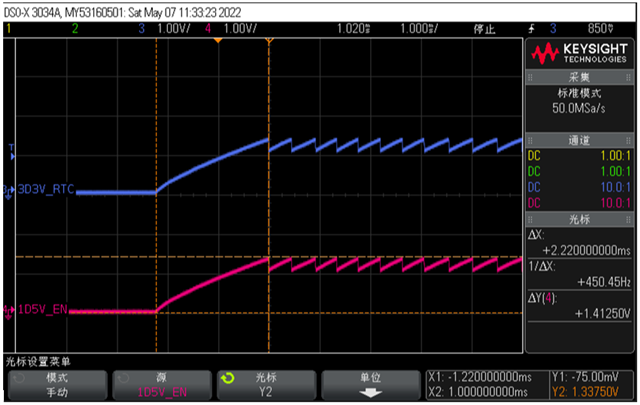Hi team,
my customer discover large leakage (1mA) at Vin of TLV73315 during "coin battery supply",
as you can see below the red circle, when they decrease the resistor value, the leakage disappear,
also when they use adapter input ( another diode's input) , no leakage occur miraculously.
does this has something to do with the RC between battery and vin during power up? (R=1Kohm, C=2uF )

BTW, they also use p2p source TPS7A0515, and unlike TLV73315 they see no issue at all.



